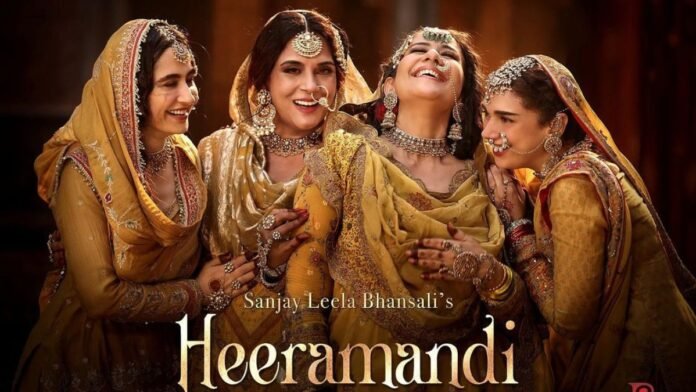Sanjay Leela Bhansali, renowned for his visually stunning and emotionally captivating films, has stirred controversy yet again with his latest project, “Heeramandi.” The prolific director, known for pushing boundaries and exploring complex themes, has reportedly directed what is being termed as the most offensive scene of his career.
“Heeramandi,” set against the backdrop of the red-light district in pre-independence India, promises to delve into the lives of the women who inhabit this world. However, it appears that Bhansali’s artistic vision has crossed lines for many viewers and critics alike.
The controversy revolves around a particular scene directed by Bhansali, which is said to be more controversial and provocative than even the climax of his previous film, “Padmaavat.” While the details of the scene have not been revealed, speculation and rumors have been swirling, fueling outrage and debate across social media platforms and within the film industry.
Critics argue that Bhansali’s portrayal of sensitive subjects such as gender, sexuality, and power dynamics in “Heeramandi” lacks nuance and sensitivity. Many have raised concerns about the potential for the scene to perpetuate harmful stereotypes and contribute to the objectification and marginalization of women.
Despite the controversy, Bhansali remains steadfast in his artistic vision, defending his creative choices as essential for depicting the gritty realities of life in the red-light district. He maintains that “Heeramandi” is a bold and unapologetic exploration of female agency and resilience in the face of societal oppression.
The uproar surrounding “Heeramandi” underscores the ongoing debate within the film industry about the responsibility of filmmakers to handle sensitive subjects with care and respect. While some argue for artistic freedom and the importance of addressing taboo topics, others emphasize the need for greater accountability and awareness of the potential impact of cinematic portrayals.
Amidst the controversy, it’s crucial to consider the broader context in which “Heeramandi” is situated. Bhansali’s films have always been characterized by their grandeur, elaborate sets, and meticulous attention to detail. From “Devdas” to “Bajirao Mastani,” his work has often been praised for its visual splendor and emotional depth.
“Heeramandi,” set in the early 20th century, explores the lives of courtesans and sex workers in a period of significant social and political upheaval. By delving into the inner workings of a red-light district, Bhansali aims to shed light on the struggles and aspirations of these marginalized women, offering a nuanced portrayal of their experiences.
However, the controversy surrounding the film raises important questions about the ethical boundaries of artistic expression. While filmmakers have a right to tackle difficult subjects and challenge societal norms, they also have a responsibility to do so in a manner that is respectful and mindful of the impact on vulnerable communities.
In recent years, there has been growing awareness of the need for more authentic and inclusive representation in media and entertainment. As such, filmmakers are increasingly being called upon to consider the perspectives and lived experiences of the communities they portray, particularly those that have historically been marginalized or misrepresented.
The controversy surrounding “Heeramandi” underscores the complexity of navigating these issues. On one hand, there is a desire to push boundaries and explore taboo subjects in the pursuit of artistic truth. On the other hand, there is a recognition of the potential harm that can be caused by sensationalizing or glamorizing sensitive topics.
In response to the backlash, Bhansali and his team have defended their creative choices, emphasizing their commitment to telling a compelling and authentic story. They have also pledged to engage with critics and community leaders to address concerns and ensure that the film is received in a responsible and respectful manner.
Ultimately, the impact of “Heeramandi” will depend not only on its artistic merit but also on the manner in which it is received and interpreted by audiences. As the film prepares for its release, it serves as a reminder of the power of cinema to provoke thought, spark conversation, and challenge preconceived notions about society and culture.
In the meantime, the controversy surrounding “Heeramandi” serves as a reminder of the importance of thoughtful and responsible storytelling in an increasingly diverse and interconnected world. As filmmakers continue to grapple with complex ethical dilemmas, it is essential that they approach their craft with empathy, integrity, and a commitment to amplifying the voices of those whose stories deserve to be told.

